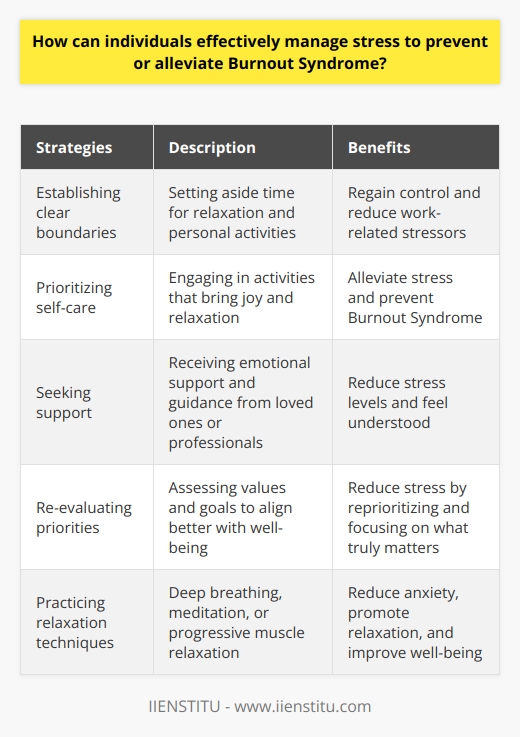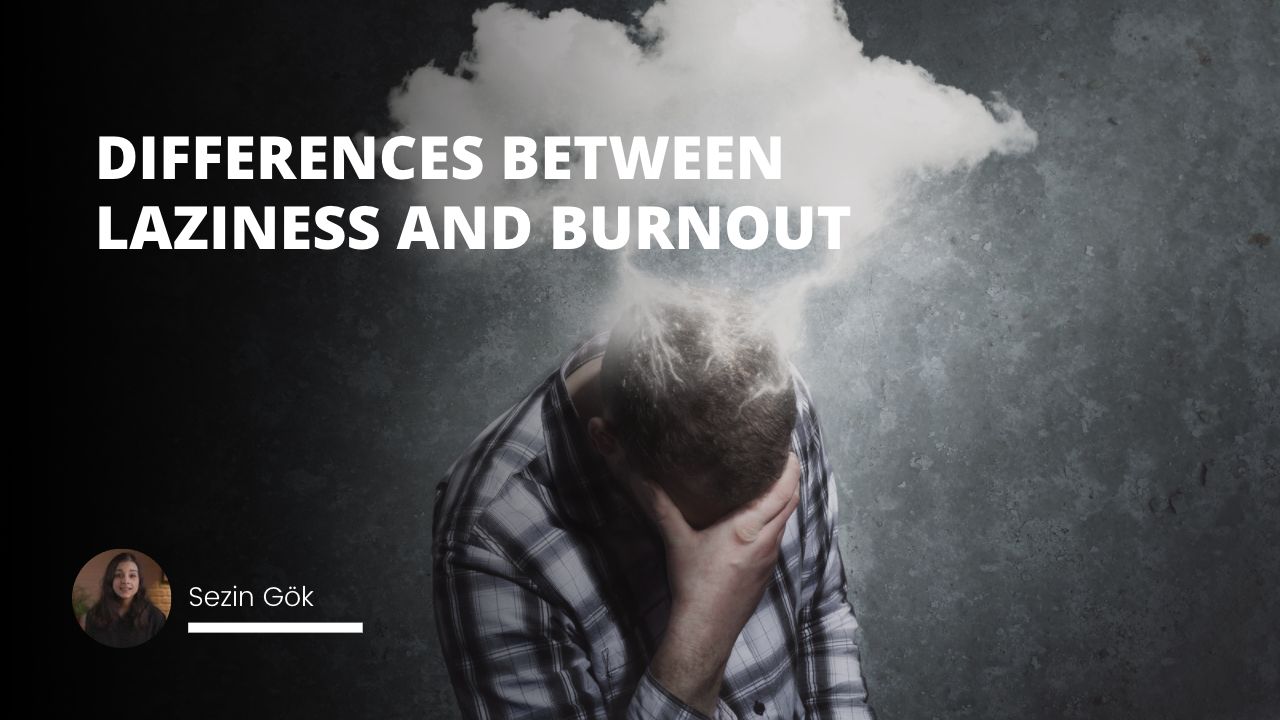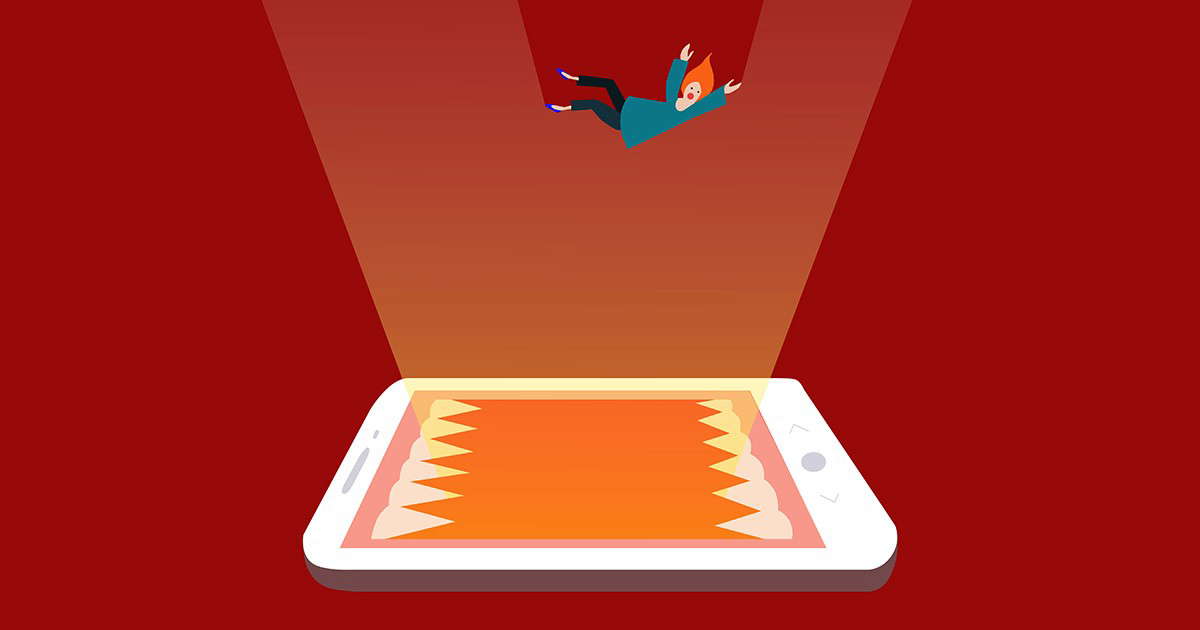
Burnout has gained significant attention in today’s fast-paced and demanding world, particularly among professionals in high-pressure careers. Burnout is not merely feeling tired or stressed; it is a state of chronic physical and emotional exhaustion, often accompanied by feelings of cynicism and detachment.
This article will explore burnout syndrome, its signs, causes, and the importance of effective stress management in preventing or alleviating its effects.
Related Course: Stress Management Online Course
Article Index:
What is Burnout Syndrome?
Burnout syndrome refers to physical, emotional, and mental exhaustion caused by prolonged and excessive stress. It occurs when one feels overwhelmed, emotionally drained, and unable to meet constant demands. As the stress continues, individuals begin to lose the interest and motivation that led them to take on a particular role in the first place.
Signs of Burnout:
Emotional Exhaustion: One of the most common signs is feeling drained, unable to cope, and tired.
Cynicism and Detachment: People might feel disconnected from their work or the people around them, leading to isolation and a lack of interest or enjoyment in tasks they once loved.
Reduced Performance: Individuals with burnout often feel like they can’t concentrate, face difficulty getting the job done, or experience declining creativity and productivity.
Causes of Burnout:
There isn’t one single cause for burnout; it usually results from a combination of factors:
Unmanageable Workloads: Constantly feeling buried under a mountain of tasks with no end in sight can lead to burnout.
Lack of Control: A lack of influence over one’s work or responsibilities can cause feelings of helplessness.
Insufficient Rewards: Receiving more recognition or reward for hard work can be demotivating.
Lack of Community or Support: Feeling isolated at work and in personal life can amplify feelings of stress and exhaustion.
Mismatched Values: If personal values don’t align with the tasks or actions, it can decrease satisfaction and increase stress.

Burnout Syndrome and Personal Development: A Deep Dive
Burnout doesn’t just affect a person’s well-being and performance at work; it significantly hinders personal development. Personal development encompasses an individual’s growth by acquiring new skills, knowledge, and experiences that improve self-awareness, build identity, and facilitate employability, among other benefits.
Related article: What Are the 3 Aspects of Personal Development?
How Burnout Impacts Personal Development:
Stagnation in Skill Acquisition: Personal development often requires proactive learning. A burnt-out individual is less likely to have the energy or motivation to pursue new knowledge or skills, stalling their growth.
Decreased Self-awareness: Burnout can cloud judgment and decrease introspection. This means individuals may need to recognize potential growth areas or understand their strengths and weaknesses.
Loss of Motivation: Personal development usually requires a level of intrinsic motivation. However, one of the primary symptoms of burnout is a lack of motivation, making it challenging to pursue personal goals.
Reduced Network Building: Networking and creating meaningful relationships are critical to personal and professional growth. Burnout can lead to social isolation, reducing opportunities to meet mentors or like-minded peers who can contribute to personal development.
Impaired Cognitive Function: Chronic stress and burnout can impact cognitive functions like memory and attention, making it hard for individuals to learn and retain new information.
Integrating Personal Development in Burnout Prevention:
Lifelong Learning: Encourage a culture of continuous learning, which keeps the mind active and engaged. This can range from formal education to workshops, online courses, or reading books related to personal interests.
Related article: Advantages And Disadvantages Of Lifelong Learning
Self-reflection: Allocate time for self-reflection, which can provide clarity, increase self-awareness, and set a path for personal growth. Techniques like journaling or meditative practices can be beneficial.
Setting Personal Goals: Separate from professional ones, personal goals could be related to health, hobbies, or other passions. They offer an avenue for achievement outside the professional sphere, which can be rejuvenating.
Engage in Diverse Experiences: Trying new things can stave off monotony and keep burnout at bay. Whether picking up a new hobby, traveling, or simply attending a workshop on a topic outside one’s regular profession, diversity of experience can invigorate the mind and spirit.
Seek Mentorship: A mentor can provide guidance, share experiences, and offer perspective. This relationship can be instrumental in facilitating personal growth and providing a support system.
Burnout syndrome poses a significant threat to personal development. As the lines between work and personal lives become increasingly blurred in today’s digital age, understanding the deep interconnection between burnout and personal growth is crucial.
By integrating personal development strategies into our daily routines, we can combat the detrimental effects of burnout and foster an environment conducive to continuous growth and well-being.
Stress Management: The Key to Prevention and Recovery
Effective stress management is pivotal in preventing burnout and aiding recovery if you’re already experiencing symptoms. Here are some strategies:
Set Clear Boundaries: Make sure to delineate work time from personal time. This means not checking emails constantly outside work hours and taking breaks when needed.
Prioritize Self-Care: Engage in activities that you enjoy and that make you feel relaxed. This could be reading, practicing yoga, taking walks, or simply spending time with loved ones.
Seek Support: Talk to someone you trust about your feelings, whether a friend, family member, or therapist. They can offer perspective, advice, or simply a listening ear.
Reevaluate Your Priorities: This may involve changing roles, seeking out specific tasks that align more closely with your values, or finding a job that offers a better work-life balance.
Practice Relaxation Techniques: Techniques such as deep breathing, meditation, and progressive muscle relaxation can effectively manage stress.
Burnout syndrome is a pressing concern in the modern world and can have profound implications for mental, emotional, and physical health. Recognizing the signs early and implementing effective stress management techniques is vital. In an age where productivity and constant engagement seem paramount, it’s essential to remember that rest, relaxation, and personal well-being are equally crucial.

Frequently Asked Questions
What is Burnout Syndrome, and how does it differ from general stress?
Burnout Syndrome is a state of chronic physical, emotional, and mental exhaustion resulting from prolonged and excessive stress. It's characterized by overwhelming fatigue, cynicism, detachment, and a sense of inefficacy.
While general stress can lead to tension and worry, burnout is a more advanced and chronic condition that stems from unrelenting stress, often associated with workplace demands and a decline in performance and personal development.
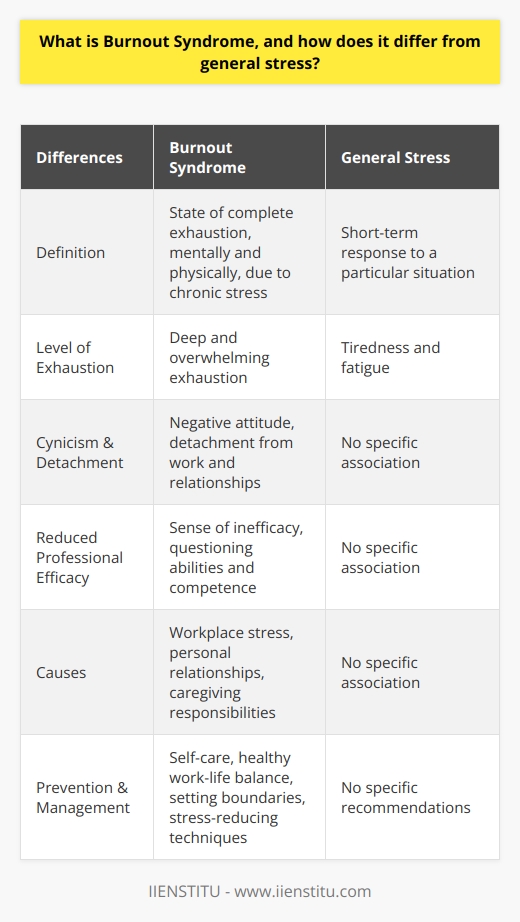
What are the primary signs of someone experiencing Burnout Syndrome?
The primary signs of Burnout Syndrome include emotional exhaustion, where one feels drained and unable to cope; cynicism and detachment, leading to a disconnection from one's job or surroundings; and a noticeable reduction in performance, manifesting as difficulty concentrating or a decline in productivity. These symptoms go beyond typical fatigue and can impact professional and personal aspects of an individual's life.
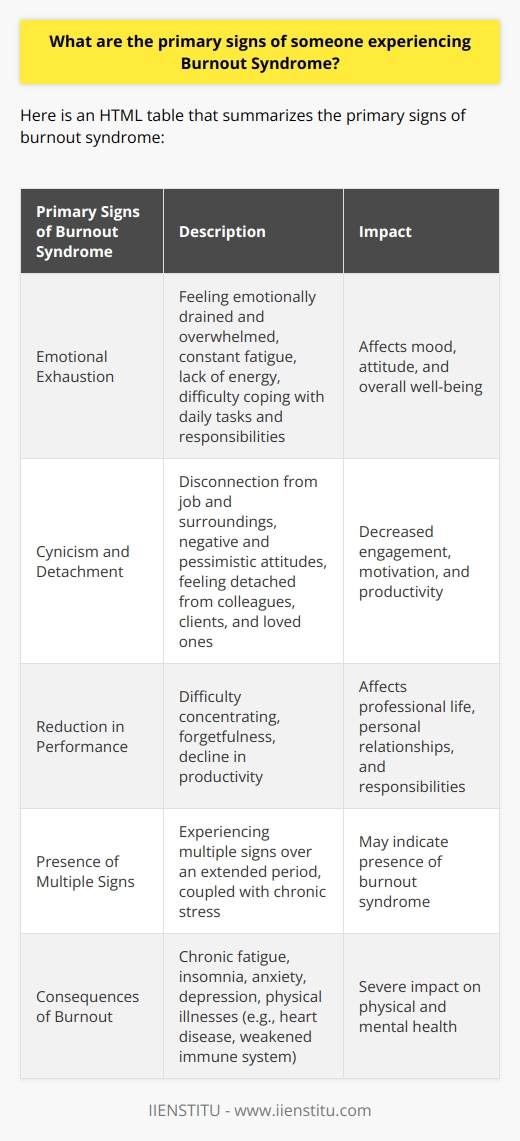
How can individuals effectively manage stress to prevent or alleviate Burnout Syndrome?
Effective stress management strategies to prevent or combat Burnout Syndrome include setting clear boundaries between work and personal time, prioritizing self-care activities such as hobbies or relaxation techniques, seeking support from friends, family, or professionals, re-evaluating priorities to align more closely with personal values and well-being, and practicing relaxation techniques like deep breathing, meditation, or progressive muscle relaxation.
